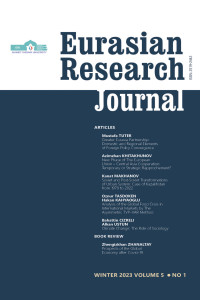Abstract
China-Russia strategic partnership has evolved into a new stage where the two great powers share increasing overlapping and complementary interests. The Greater Eurasia Partnership (GEP) framework offers an integrated approach to conducting their relations by deepening collaborative partnerships through regional development and security cooperation. This article aims to analyze evolving nature of the GEP by focusing on domestic and regional elements of foreign policy convergence. Although connecting the Belt and Road Initiative (BRI) to the GEP illustrates the domestic level of convergence in their foreign
policies, the regional context reflects a partial convergence that entails further policy coordination in managing potential risks and challenges, particularly in Central Asia and more broadly in Eurasia. In examining the evolving nature of GEP, the international political economy perspective is applied to foreign policy analysis with a particular focus on the development-security nexus. The article
concludes with a discussion of the main drivers and future trajectory of the GEP with regard to regional and global stability.
Details
| Primary Language | English |
|---|---|
| Subjects | Political Science |
| Journal Section | Research Articles |
| Authors | |
| Publication Date | February 28, 2023 |
| Published in Issue | Year 2023 Volume: 5 Issue: 1 |


